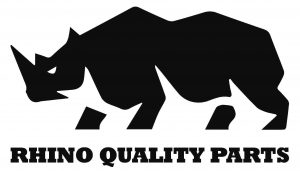
CARS, LIGHT COMMERCIAL, TRUCKS & HEAVY EQUIPMENT – DPF Cleaning Australia
Exhaust Aftertreatment Systems (EATS) most commonly referred to as DPF are installed in most modern diesel-powered passenger vehicles manufactured from 2002.
All 2007 and newer on-road vehicles are equipped with EATS to reduce particulate matter (soot) in accordance with Euro specs. Trucks newer than 2008 can also be equipped with additional systems such as SCR (Selective Catalyst Reduction)
A clean exhaust after treatment system ensures optimum engine power, performance and fuel economy, reducing the risk of unplanned maintenance expenses and down time.
EATS are also a widely used, proven, emissions control product in the mining industry on varying sizes of equipment from drill rigs to loaders, dump trucks, excavators, heavy transport and stationary diesel-powered equipment.
In all these sectors, an automatic regeneration mode is initiated by sensors that monitor the level of diesel particulate matter.
Excessive oil or fuel contamination, incorrect or bypassing of scheduled burns, short distance city driving, excessive engine hours and various other factors lead to over-sooting and heavy ash loading where the vehicle or equipment experience frequent and ineffective regenerations, loss of power, decreased fuel efficiency and eventually cease to operate altogether.
Our experienced team can safely recover most types of EATS across all industry sectors at a fraction of the cost of replacement. We understand the importance of good customer service.
We aim to work closely with our customers to ensure diagnostics are performed correctly to eliminate further down time. We have highly trained experienced people we can refer our valued customers to if they are having trouble with difficult diagnostics.
DOC and DPF combinations do not have to be cut open for cleaning which means no interfering with the integrity of the original units.
Our Recovery process allows us to inspect the unit internally then asses what is required. We can thoroughly clean and recover all types of exhaust after treatment products, eliminating the need for cutting and re-welding of units.
Our Cleaning Process
Substrate Before During After
Before
During
After
Basic exhaust after treatment cleaning begins with a visual internal inspection for evidence of damage, such as cracking, melting or loose substrate and where possible internal pin depth testing to determine if the cleaning process is valid.
Collecting of client data for accurate record keeping is then recorded. If the unit is deemed un-serviceable, we can offer immediate advice and competitive pricing from our extensive range of aftermarket options, sourced from our reputable suppliers. NOTE: always check you are purchasing a quality product equivalent to the OEM unit and ensure it is fit for purpose.
Recovery Procedure
If required, a before Air Flow and Back Pressure bench test will determine the amount of restriction. This data is used in conjunction with OEM specifications and compared to a base line of our historical data.
A detailed report is then given to the customer before any further work is done.
If recovery is required, we follow a strict process of very slow simulated regeneration for 8hrs, turning the soot to ash. This is the most important part of the recovery and if not done, the unit being cleaned will only block again prematurely and not give a trouble-free extended life.
The unit is then placed in our pneumatic reverse pulse cleaning machine to remove the bulk of the ash.
The next procedure is our Hydro flush machine, where a reverse pulse flush with chemical injection is performed. At this point we monitor the back pressure and flow passing through the substrate. Once back pressure is below 1kPa and flow is at 460lpm we know the substrate is cleaned and has met OEM specification.
The unit is then placed on our pneumatic warm air-drying bench to dry completely and enable further accurate testing. Once dry, a final inspection of the substrate is conducted
Finally, the unit is flow and back pressure bench tested with a pressure gauge fitted inline, to determine exact back pressure. We guarantee every unit put through our process will have no more than 1kPa of back pressure and is flowing at full capacity. Flow bench simulation is equivalent to a 4litre diesel engine running @ 3000rpm.
All the data is collated for our records with additional relevant information for future reference.
The unit is then tagged and packed according to its size to minimize any damage during transit and is ready for shipping back to the client. All recovered items will have an extensive check list attached to assist with upstream diagnostics.
Oil & Coolant Contaminated DPF Recovery
Mechanical failures of a turbocharger, injectors, head gaskets and EGR system can cause excessive amounts of wet hydrocarbon and organic fractions loading in the substrate. In most cases oil-soaked substrates can not be restored to a serviceable condition.
Recovering of coolant contaminated substrate is successful if done correctly.
NOTE: NOT checking and testing the Primary or Secondary DOC where fitted, WILL cause premature blocking of the DPF substrate. The DOC is the more important part of the exhaust after treatment system and is integral to the DPF operating correctly.
Inspection, Testing & Quality Control Standards
Our cleaning processes incorporate a rigorous inspection and data recording process, tracking each unit by serial and VIN numbers throughout each stage of the cleaning process. Every unit is shipped with a data report for the customers records.
Our team provides professional and reliable servicing and supply for all Exhaust After Treatment Systems on the market today.
If you need to replace a damaged system or downtime is crucial, we can offer our clients, high-quality aftermarket replacement options. All makes and models in stock.





